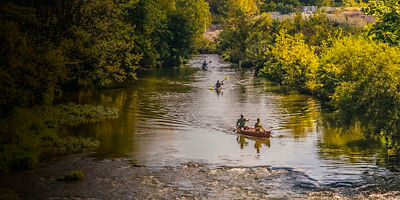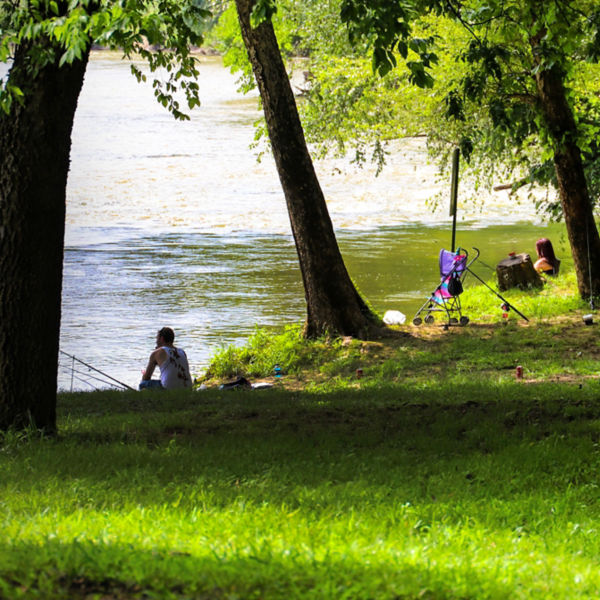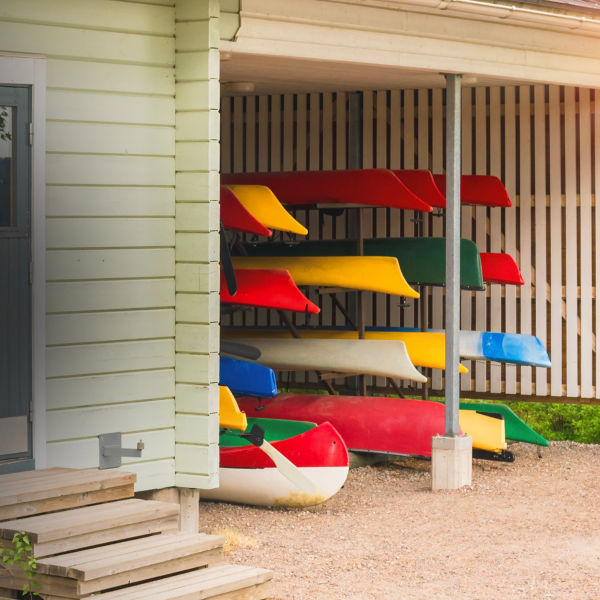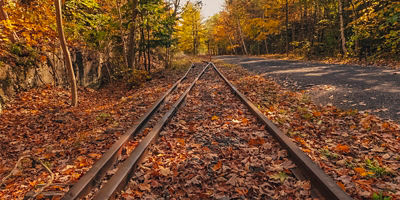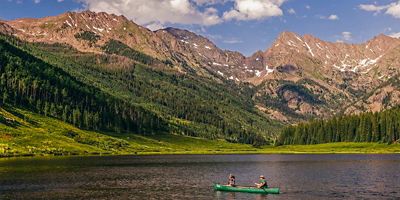
There’s a new era in ecological restoration across the country with the removal of dams restoring rivers to their natural, free-flowing states and enhancing everything from fish migration to recreation. According to conservation group American Rivers, in the past 20 years, more than 1,100 dams have been removed in the U.S.—many of them aging, unsafe structures that outlived their usefulness. In 2020, 69 dams were removed across 23 states (led by Ohio with 11); and last year an additional 57 dams were removed, reconnecting more than 2,290 miles of rivers in 22 states, with Pennsylvania leading the charge at seven. At least 25 more are slated for removal this year.
There’s good reason for the decommissioning efforts. Removing dams benefits river and aquatic health, and public safety—not to mention climate resilience. It’s better for fish migration, riparian zones and, believe it or not, even hydropower production through better energy-efficiency practices. More good news: It’s also better for paddlers, with reservoirs and concrete impediments replaced by clear-flowing waterways for recreation. Want to paddle some of these recently restored, free-flowing waterways? Put the following world-class stretches on your bucket list.
Penobscot River, Maine
New England’s second largest river system, Maine’s Penobscot (including its West and South branches) flows 264 miles from Penobscot Lake on the Maine/Quebec border into Penobscot Bay and the Atlantic Ocean near the town of Bucksport. In 2004, the Penobscot River Restoration Trust led a public-private effort to maintain hydropower production while also restoring the river’s sea-run fisheries. It removed the Great Works Dam in 2012, the Veazie Dam in 2013, and created a bypass channel around the Howland Dam in 2016. The result: Atlantic salmon and other sea-run fish now have access to 2,000 miles of spawning habitat and populations of striped bass, alewife, blueback herring, smallmouth bass, American eel, rainbow smelt, tomcod and endangered shortnose sturgeon are booming. The removals are also better for paddlers, who can now recreate in the river’s lower section, following the wake of Henry David Thoreau, without the hazards.
Local Beta: One such stretch, revealing ripples and channels buried since the Industrial Revolution, is the section around the town of Old Town, home to canoe maker Old Town Canoe as well as the Penobscot Nation. Numerous access points allow you to paddle various lengths, with Class I-II waves replacing the now-gone dam. One flatwater fave: the 60-mile Medway-to-Old Town stretch, offering great smallmouth bass fishing (access via State Route 157 between Medway and Mattawamkeag, or south of Mattawamkeag via U.S. Route 2). Farther upriver, try the East Branch, from Matagamon Lake to Whetstone; or the Upper West Branch from Roll Dam to Chesuncook Village (portage or run the ledge drops at Roll Dam), with views of Mount Katahdin. For whitewater, try the West Branch, from Ripogenus Gorge to Pockwockamus Falls, for some of Maine’s best Class IV-V rapids, including Cribworks, which conservation nonprofit American Whitewater calls “the toughest regularly run rapid in New England.”
Embrey Dam - Rappahannock River, Fredericksburg, VA
With the 22-foot-high Embrey Dam on Virginia’s Rappahannock River near Fredericksburg removed in 2004, canoeists, rec kayakers, and standup paddleboarders can now run a half-mile of new Class I-II rapids just north of town. Now the longest free-flowing river in the eastern U.S. and Chesapeake Bay watershed, ‘the Rapp’ extends unblocked for 195 miles, from its origin at Chester Gap in the Shenandoah National Park of western Virginia to Stingray Point in the Chesapeake Bay. Paddlers can now float unimpeded from the upper Rapp to its Chesapeake mouth or enjoy multiple access points for shorter day-trips. The dam’s removal has also transformed the river’s ecology, letting migratory fish like American shad and striped bass gain access to spawning grounds in the upper Rapp and its tributaries for the first time in over 150 years.
Local Beta: For the Fredericksburg run, put in at the boat launch on State Route 618 (River Road) near Motts Run Park, which also serves as the takeout for the milder canoe run that starts 24 miles upstream at Kelly's Ford (skip a mile of flatwater by putting in farther down River Road where the road turns away from the river). Several Class I-II rapids occur in the first mile and as you pass under Interstate 95, you enter the former-flatwater section that now has large boulders to navigate. The first new Class II rapid is called Hunters Mill Rapid, where water used to be diverted for a mill downstream near the dam, followed by Carter Never Saw It, a tribute to the late local canoeing icon Randy Carter, who never had a chance to see this stretch. The dam removal also exposed a bus-sized jumping rock known affectionately as “BFR” (“Big Fat Rock”). Novices can take out just below the removed dam on river-right, while more advanced paddlers can navigate Class III Falmouth Rapids just below (hint: stay with the main flow of the river), taking out on river-right at Old Mill Park, just off of Fall Hill Avenue in Fredericksburg. A water trail is also being developed along the river by the Friends of the Rappahannock in cooperation with the Virginia Dept. of Conservation and Recreation, encompassing historical paddling trips from Kelly's Ford to the Fredericksburg City Docks.



































































